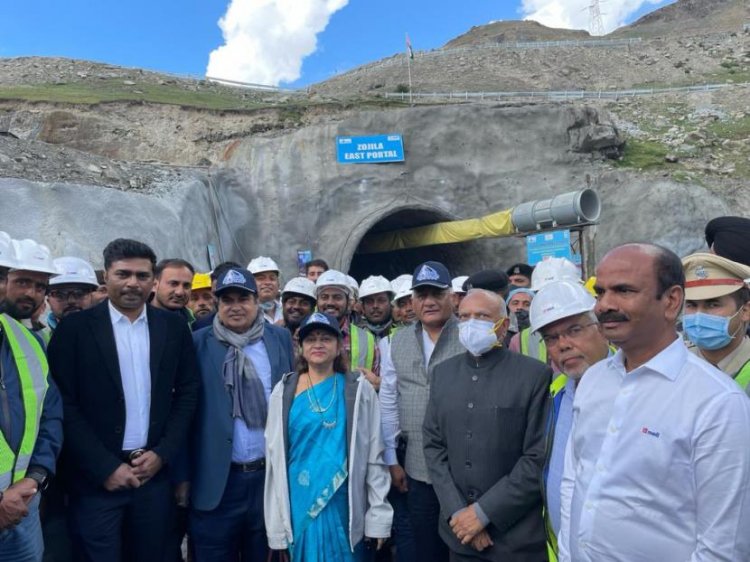Jammu and Kashmir: Changing Scenario
Asia News Agency

There were 229 terror-related incidents in Jammu and Kashmir last year as compared to 417 in 2018 - a drop of 38 per cent over three years. There were also fewer deaths in the 2019-21 period (46 military personnel and 87 civilians) as compared to the 2014-19 period, when 178 soldiers and 177 civilians were killed in terror-related incidents and attacks.
Increased infrastructure development
J&K has also seen increased infrastructure development - including industrial development and investment roadways, electricity generation, education, health, and housing - since 2019.
Overall, industrial development has increased as a ₹28,400 crore scheme for industrialisation of J&K in 2021 means over 4.50 lakh people can get jobs. Also, from 2019 to date proposals worth ₹47,441 crore - jobs potential of 1.97 lakh - have been received.
Roadways: Road length has increased from 39,345 km before 2019 to over 41,000 km since. A new scheme for pothole-free roads has also been initiated and the target is to make 5,900 km of pothole-free roads by 2021-22. Of this 4,600 km has been achieved.
Electricity: Power generation and distribution has also improved since 2019. MoUs for three projects - Uri (stage 2), Dulhasti (stage 2), and the Sawalkote hydro-electric project - are now being developed. The combined capacity for these is 2,894 MW. The 930 MW Kirthai hydro-electric project and several others are now also being developed for a total 2,164 MW capacity.
Over the next five years the government expects 21 hydro-electric projects to generate 5,186 MW of electricity, which is more than the 3,505 MW capacity developed since independence.
Health: Prior to 2019 there were three medical colleges and 20 district hospitals in J&K. Since then two new AIIMS and seven new medical colleges have been added, as well as cancer institutions and nursing schools. Nearly 2,000 seats have been added in MBBS and PG courses.
Significantly, a J&K health scheme now provides free universal health coverage up to ₹5 lakh per household per year for all residents of the union territory.
Key health indicators - like infant mortality rate and availability of clean drinking water - have also improved.
Education and housing: Education and housing have also seen improvements, with more degree/engineering colleges (147 since 2019 compared to 96 earlier).
In line with changing global education systems and requirements over 1,200 college classrooms are now digital classrooms, and both Jammu University and Kashmir University have seen NIRF rankings increase.
This includes expenditure of ₹36,112 crore (compared to ₹20,197 crore before 2019) for 25 completed projects for creation of homes for returning Kashmiri migrants.
100 per cent of urban wards in J&K are now covered by door-to-door waste collection schemes, compared to just 52 per cent before 2019.
Civil aviation: J&K now has both night-landing of aircrafts and is open to international passenger traffic to boost tourism revenue. Air traffic is now nearly four lakh per month since 2019, compared to less than two lakh per month earlier.
Increased revenue: All of this development since 2019 has translated into increased revenue from GST and other tax collection - approx. ₹13,418 crore compared to ₹8,213 crore before 2019. Excise collection has also increased - from ₹1,275 crore approx. before 2019 to ₹1,560 crore since.
(Hindustan Times)
















